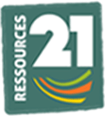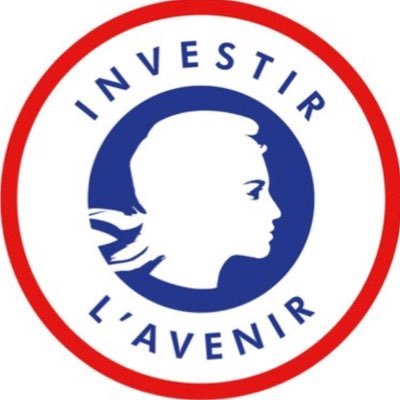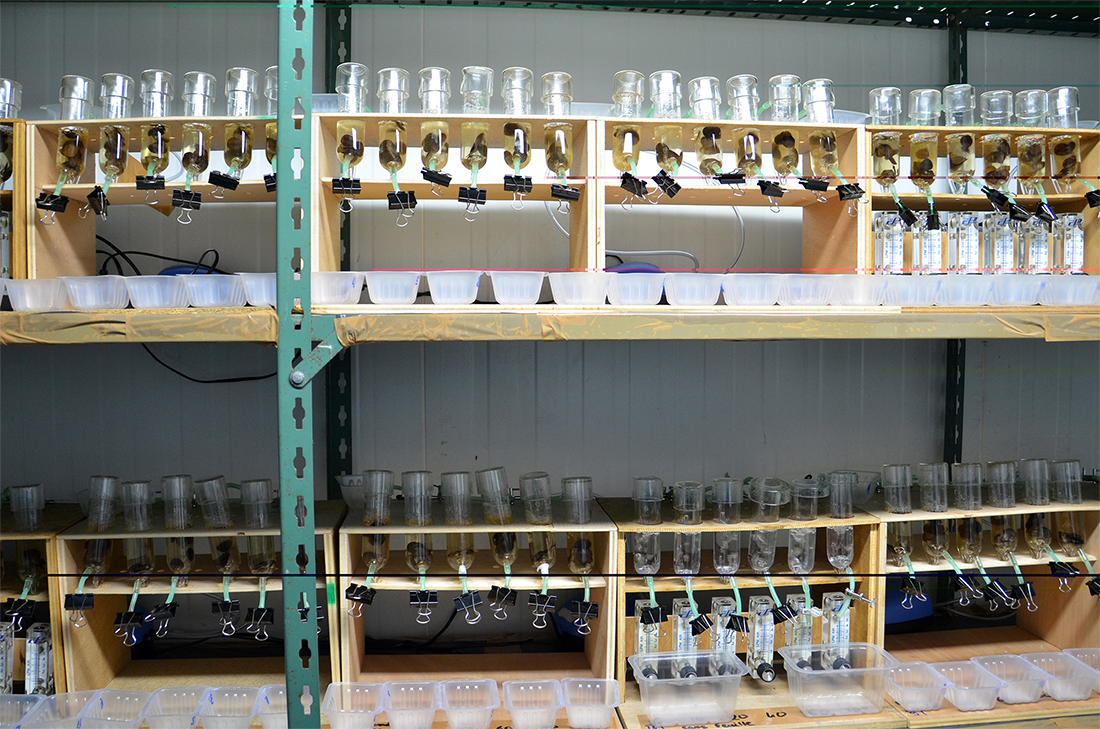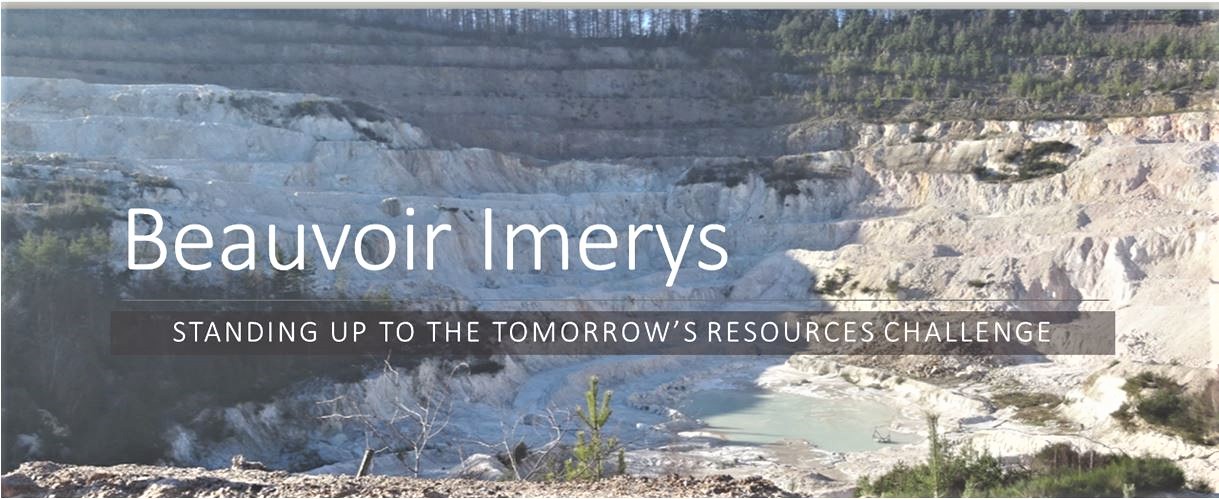One of the main aims of LabEx R21 is to generate new scientific and technological knowledge that will facilitate the the identification and exploitation of future deposits.
The goal of RESSOURCES21 is to reinforce research through several types of project. We lead number of secondary projects as Post-doctoral research, Ph.D research, Visiting researcher projects, Chair projects and éducational projects which are integrated into the following themes :
Five principal projects
1. The nickel Programme
The LabEx RESSOURCES21 has decided to develop under its strategic framework, integrated three-year projects, with the aim to cover the whole geochemical cycle of a group of metal, and to enhance the multidisciplinary approaches. The proposal for a research programme on the nickel cycle was linked to two important observations.
The studies proposed in this project aim to contribute to a better understanding of the behaviour of the Ni-Co-(Sc) system and the lithospheric and biogeochemical cycles of these metals. The project will consider the processes of transport and entrapment of these metals in primary deposits (laterites and saprolites), and develop new concepts for the exploitation of secondary reserves (soils and technosols).
2. The Rare Earth Programme
Rare earth elements (REE) are the subject of European and international research programmes and many projects are linked to enhanced exploration and to the intense search for clean and innovative ore-processing methods. Given this, the project takes into account:
• Existing know-how and the studies already supported by the LabEx RESSOURCES21 that concern processes of fractionation at the magmatic stage (carbonatite volcanoes – PhD thesis of G. Mollex), studying the impact of REE on organisms (postdoctoral research - V.Gonzales), and the effects of gadolinium issued from hospitals and released into the environment (PhD thesis of E. Perrat).
• Avoiding duplication of studies currently supported by European contracts.
3. The Gold Programme
French Guiana is a new key target, especially for indium, copper and gold as it is the second mining potential in a French territory with ongoing exploration, mining and exploitation and numerous challenges in all domains. We are aware about the risk associated with this project regarding the different political controversies but we are sure of the capacity of Labex R21 to be able to reply to technical challenges and, more especially, to societal and environmental issues that which are at the origin of the controversies. French Guiana’s natural resources include gold, (petroleum), kaolin, niobium, tantalum, and clay. This territory is also a major reservoir of biodiversity, which is strongly threaten as in most of the tropical regions; mining operations may cause irreversible damage to the biodiversity and new ways of mining have to be implemented to minimize the impacts and to restore degraded areas. There are several mining companies exploring potential resources in French Guyana: major companies like IamGold, aiming at major sites of which exploitation has not yet been allowed, and small companies, like Auplata, exploiting small open pits with significant gold anomalies. In February 2009, the French Government declared a moratorium on all mining and exploration activities in French Guiana until a new “mining framework” was completed and assessed. Nevertheless, French Guiana constitutes the second French area with active metal exploration. Therefore, the Labex R21 considers that it is of major interest to document a basis of knowledge to help decisions, and to accompany the evolution of exploration and mining activities. The development of collaborations with the Guiana University and national research institutes (e.g. INRA, CIRAD) about sustainable exploration and processing, environment issues and social acceptance appears essential.
4. The Lithium Programme
For several years, the small world of lithium has been booming, either in the field of production (exploration, mines, processes) or in industrial applications such as the mobile or stationary storage of electrical energy due to a sudden price increase (15,000 dollars/ton at the end of 2017). USA and Australia have recently taken part in the lithium race, and other Li sources are now considered again (Li-micas, spodumene from granites). The Labex will focus its effort on primary and secondary lithium resources by implementing a cross-functional program combining each of the previously mentioned PRTs. Regarding urban mines (recycling), the Labex will rely on the expertise of researchers on lithium-ion batteries and extractive metallurgy (recent patent from UL on electrochemical reactor for the recovery of lithium from various sources). First choice partners will be Australia (University of Queensland and the Sustainable Mineral Institute in particular) with a general agreement between UL and UQ and the set-up of an International joint lab, and Chile (the Sustainable Mineral Institute in Chile SMI-ICE) with which a MoU was recently signed, as well as UQUAT (University of Abitibi-Téminscamingue): postdoctoral contracts, joint PhD projects and researchers mobility exchanges will be favoured. Pegmatites in Spain and Portugal will be another target based on our expertise developed in the LIGHTS project funded by the KIC and focused on the development of drones equipped with infrared captors in order to identify lithium deposits, after adequate data treatment by means of artificial intelligence and specific models. Kinetic crystallization experiments will be performed to understand the role of Li on processes of nucleation and growth and on the development of pegmatitic textures. These studies will constrain the nature of pegmatite melts and enable the timescales of pegmatites’ consolidation to be quantified.
The European Lithium Institute eLiis 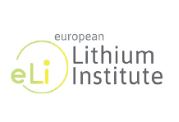 |
|---|
The European Lithium Institute eLi is an international non-profit organization under Belgian law (AISBL) with headquarters in Brussels, Belgium and Würzburg Germany. The virtual institute links up competences and infrastructure along the whole lithium value chain to generate focused international cooperation and to enable comprehensive policy and industry advice. The Universté de Lorraine and consequently the LabEx RESSOURCES21 is part of the initial consortium's founder of eLi which mission consists of leading European academic and research organisations. The long-term vision of the European Lithium Institute eLiis the establishment of a sustainably funded European Lithium Institute with strong industry contribution and high impact on a sustainable supply of lithium and related critical raw materials for Europe.
|
5. The BEAUVOIR IMERYS Lithium Programme
Critical metals are the metals supply disruption of which can entail severe industrial and/or economic consequences for sectors such as renewable energy, mobility and defense. Since these metals are associated with significant supply risk, there is a strong interest in exploring their alternative sources. A good example is lithium. This metal was listed as a critical metal for the European Union in 2020. The currently used lithium comes from the Andean salars and from granites or lithiniferous silicate pegmatites (lepidoolite, or spodumene). There is currently no significant lithium production in Europe but several prospects are underway.
According to the studies of Deetman et al. (2018)and Mulvaney et al. (2021), the global demand for lithium could increase tenfold between 2015 and 2050, mainly due to the demand on materials required for the production of lithium-ion batteries for electric vehicles. The same authors report the possibility of depletion of current lithium resources by 2060-2090 (Mulvaney et al., 2021). The search for new resources is therefore essential to meet the future demand.
In the framework of a collaborative research program between LabEX RESSOURCES21 and Imerys, the granite massif of Beauvoir will be examined from the mineralogical, geochemical, and metallogenic perspectives. The work focuses on the formation of intrusion (age, nature of magmatic processes leading to the formation of hyper-differentiated granites), the mineralogy of critical or strategic metal carriers, such as Li, Nb-Ta, Sn-W, and the most efficient methods of separating the rare metal-carrying phases.
The Beauvoir site is located in the Échassières district, Auvergne-Rhône-Alpes region, 470 km from Nancy (Figure 1), in the north-east of the French Massif Central.
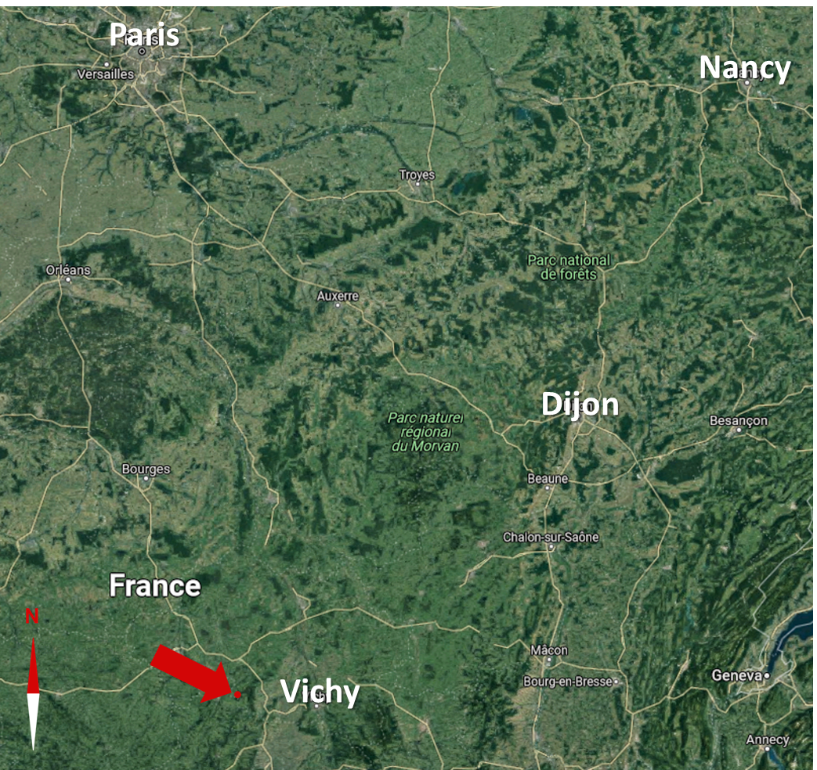
Figure 1 – Geographic location of the Beauvoir site
Beauvoir site has been exploited by Imerys for kaolin production for several decades. The site comprises a quarry and a plant that employs size- and gravity-based separation. These methods are among the “greenest” separation techniques because they do not require the use of reagents.
In January 2022, seven researchers, four doctoral researchers and two engineers affiliated to CNRS, GéoRessources, and CRPG – members of the Université de Lorraine belonging to LabEX RESSOURCES21 visited the site for the first meeting between the scientific and the industrial teams (Figure 2).

Figure 2 – The scientific team of LabEX RESSOURCES21 and the industrial team of Imerys working on the Beauvoir project
Geological setting
Owing to the works conducted by the teams of the GPF scientific drilling campaign (synthesis in the special issue of Geology of France (1987), and Cuney et al. (1992)), the subsoil structure of Beauvoir was proposed in accordance with the schematic representation given in the Figure 3.
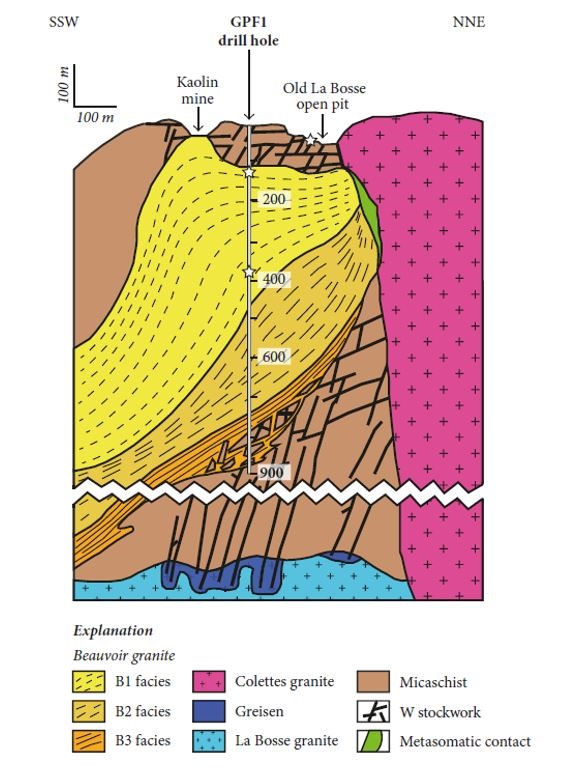
Figure 3 – Schematic representation of the Beauvoir granite (Géologie de la France, Aïssa et al. (1987)et Cuney et al. (1992))
The project
The LabEX RESSOURCES21 scientific team is composed of ten permanent researchers, two post-doctoral and five doctoral researchers. The project comprises three major axes:
First axis – Geology
The actions of this axis of the project are aimed at establishing the relationship between the distribution and the content of rare and critical metals and magmatic and hydrothermal phenomena, along with the use of geological dating methods to understand the formation of pluton over time.
Axe 2 – Characterization
The actions of the second axis of the project are dedicated to: (1) the development of portable tools designed to detect and quantify in a fast and practical manner the rare and critical metals and (2) the establishment of the relationship between geochemistry and mineralogy of the studied rocks.
Axis 3 – Processing options for metal recovery
The third axis is dedicated to the development of a processing route suitable for the recovery of lithium-bearing minerals and phases-carriers of other rare metals such as, for example, Nb and Ta, using gravity and flotation separation methods, coupled with modelling tools.
The visit to the Beauvoir site
Despite the difficult sanitary situation in January of 2022, the scientific team was welcomed on site for one and a half days in strict compliance with all health and safety regulations.
On the first day of the mission, the scientific team (divided into three groups in accordance with the scientific interests) visited the kaolin quarry (Figure 4) and the drill core storage facility.
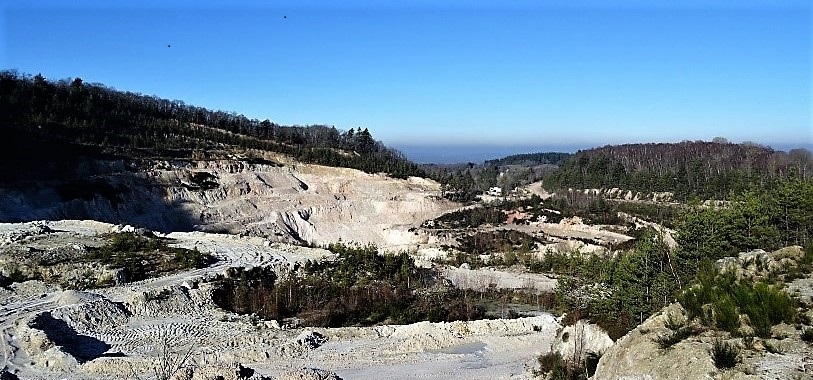
Figure 4 – Kaolin quarry. Beauvoir, Imerys
The geologists and engineers of Imerys presented the general drilling plan for the years of 2021-2022, the equipment installed on the site, the various aspects of the sampling procedure, how geological anomalies are treated and the methods used to capture the representative images of the cores. The acquisition of the core images is conducted in a closed black box, where the cores are exposed to light with constant characteristics, as well as UV light. Each core is characterized with three images: wet core, dry core and core under UV light. If necessary, color tablets are introduced for reference.
At the drill core storage facility, doctoral and post-doctoral researchers were able to make their first pre-selection of samples for their future studies.
The following half-day was dedicated to the exchange between the industrial and the scientific team. The doctoral and post-doctoral researchers presented their research projects and their strategies to achieve the set objectives. Between the presentations, short Q&A sessions with the members of industrial team took place.
The visit concluded with the demonstration made by the representatives of the «characterization» axis, which consisted in presenting the portable tools and showing their use directly on the drill cores coming from the new drilling campaign; LIBS (Laser-Induced Breakdown Spectroscopy) was presented by Naila Mezoued (Figure 5) and the XRF (X-ray fluorescence) by Jean Cauzid.
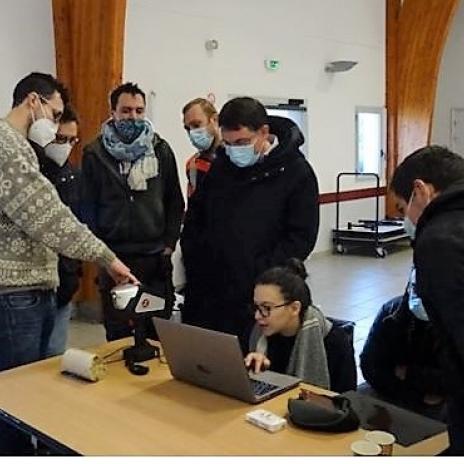
Figure 5 – Demonstration of the the portable tools (LIBS) by Naila Mezoued
References
Cuney, M., Marignac, C., Weisbrod, A., 1992. The Beauvoir topaz-lepidolite albite granite (Massif Central, France); the disseminated magmatic Sn-Li-Ta-Nb-Be mineralization. https://doi.org/10.2113/GSECONGEO.87.7.1766
Deetman, S., Pauliuk, S., van Vuuren, D.P., van der Voet, E., Tukker, A., 2018. Scenarios for Demand Growth of Metals in Electricity Generation Technologies, Cars, and Electronic Appliances. Environ. Sci. Technol. 52, 4950–4959. https://doi.org/10.1021/acs.est.7b05549
Harlaux, M., Mercadier, J., Bonzi, W., Kremer, V., Marignac, C., Cuney, M., 2017. Geochemical Signature of Magmatic-Hydrothermal Fluids Exsolved from the Beauvoir Rare-Metal Granite (Massif Central, France): Insights from LA-ICPMS Analysis of Primary Fluid Inclusions. https://doi.org/10.1155/2017/1925817
Mulvaney, D., Richards, R.M., Bazilian, M.D., Hensley, E., Clough, G., Sridhar, S., 2021. Progress towards a circular economy in materials to decarbonize electricity and mobility. Renew. Sustain. Energy Rev. 137, 110604. https://doi.org/10.1016/j.rser.2020.110604

